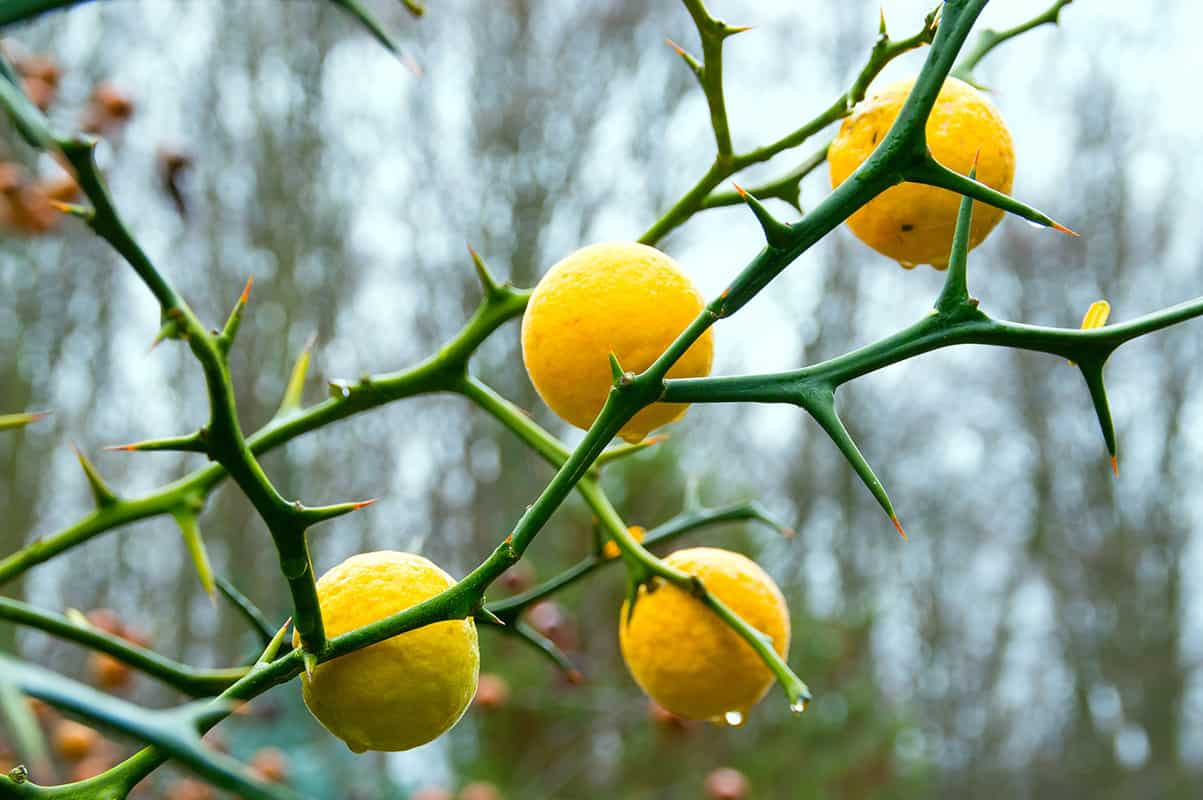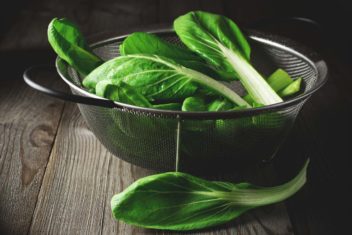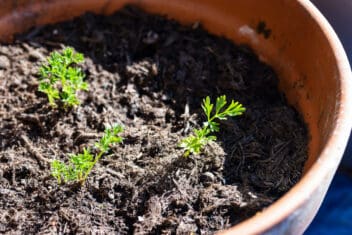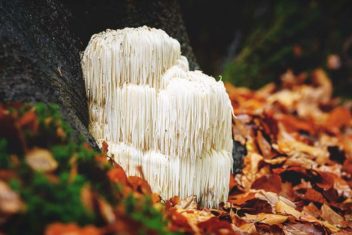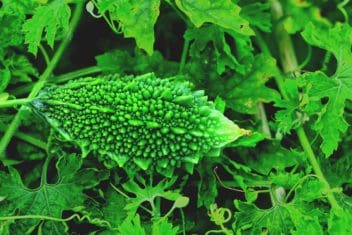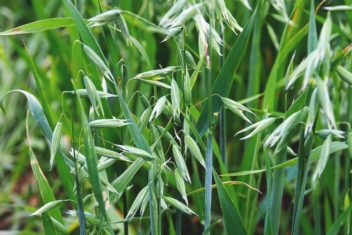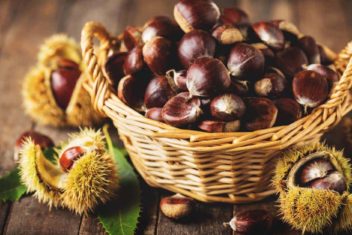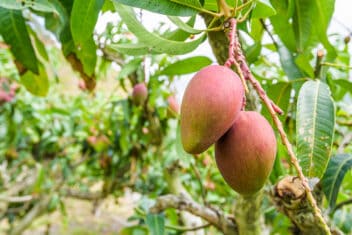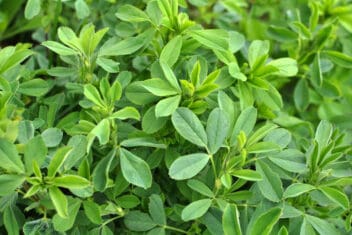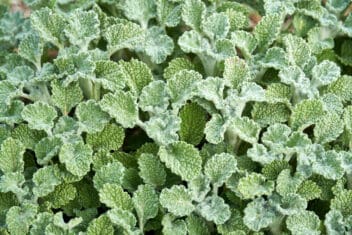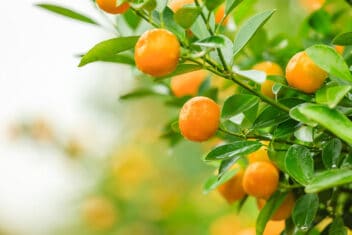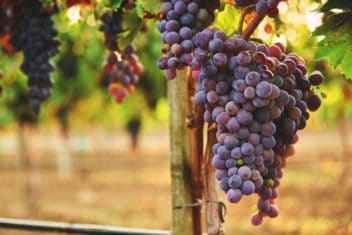Hardy oranges are the most cold-resistant of the citruses and produce an incredibly sour fruit that is more pip than flesh. You can be forgiven for wondering why anyone would be growing an orange that isn’t very tasty.
But hardy orange is a twisted, thorny plant that makes an impenetrable hedge to keep wild animals away from gardens and livestock. Seriously, it’s a tough plant. The 2 inch spikes are sharp and plentiful.
On top of that, they add an architectural element to the garden, even in the winter. And, yes, you can eat them. Intrigued?
What is Hardy Orange?
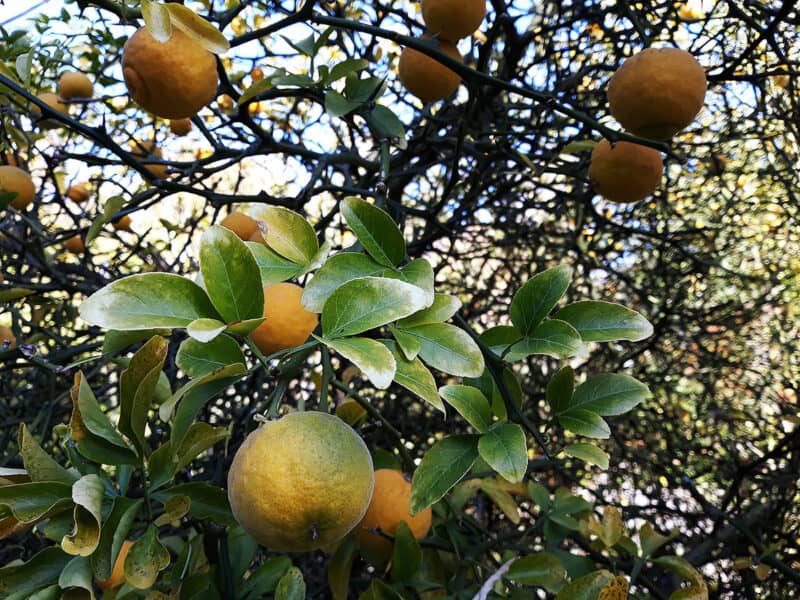
Hardy orange, or Trifoliate orange (Citrus trifoliata) has been used for thousands of years in Asian countries for medicinal purposes. The fruit makes wonderful marmalade, and I grow a tree for that purpose.
It has a naturally high level of pectin just right for those marmalade recipes, jams, and jellies.
Hardy orange is such a unique-looking plant, it’s worth growing it just for its appearance. In fact, many people don’t even harvest the fruits and let them stay on the tree to add architectural interest throughout the winter.
It’s also a good option if you want to provide a safe spot for local birds, because predators don’t want to try to navigate the thorny branches.
Let’s look at how to grow this strange plant.
Varieties of Hardy Orange
Hardy oranges are sold by many names including:
- Winter Hardy Orange
- Trifoliate Orange
- Japanese Bitter Orange
- Chinese Bitter Orange
On top of that, there are some hybrids that you may find.
Flying Dragon
This is a smaller, compact version of hardy orange. It has a dense growth pattern with sharp, curved thorns. This is the perfect variety in smaller gardens, or for those wanting to use hardy orange as a natural fence or border.
Citrange
Citranges are hybrids created using a sweet orange and a hardy orange. The resulting combination is a sweet orange that can handle a little more cold. The fruit is generally slightly less bitter and with fewer seeds than a hardy orange.
Citrumelo
This hybrid is often used as rootstock and was created from hardy orange and Duncan grapefruit.
You’ll sometimes see it called hardy graperuit.
How to Plant Hardy Orange
Hardy by name and hardy by nature, this plant will surprise you how easy it is to grow. It grows in USDA Zones 5 to 9.
Hardy oranges perform best in full sun. Some dappled shade is okay in hot areas.
Aim for a pH of 5.6 to 7.5. Loamy and sandy soil with good drainage is required.
Hardy oranges aren’t fussy, but get as close to the optimal soil conditions as possible for long term health.
Beware as you’re selecting a spot that in some areas it’s considered an invasive pest and it has naturalized in many regions. Container growing is a smart solution if you’re worried about this plant getting out of control.
When to Plant
Plant in spring when the risk of frost has passed. Hardy orange is winter hardy, but the young plants can be frost tender.
Once established, hardy orange can withstand temperatures of -10°F.
Container Planting
You can grow hardy orange in containers. Be sure to place it somewhere that it won’t slice people as they walk past.
Use a large pot or half wine barrel. Make sure there are plenty of holes and the barrel or container is on feet to allow good drainage. A container no smaller than 12 inches works.
Planting Seed
Planting hardy orange seed takes a bit of work and patience, but I think it’s worthwhile. Seeds are plentiful, so if you know someone with a hardy orange plant, you’ll get enough seeds from one fruit.
Hardy orange seeds have to be cold-stratified. In order to germinate, there has to be a period of time at low temperatures. You can do this in your refrigerator.
Place the seeds on a damp paper towel in a container. Cover and store in the refrigerator for a month minimum. Make sure the paper towel doesn’t dry out.
Remove and plant each seed in individual potting containers. It’s best to grow them in the greenhouse for their first winter if you planted them in fall.
Once the seedlings are big enough to be handled, plant them outside in their permanent position.
Grow From Cuttings
I grew two hardy orange from cuttings. It’s not difficult and if you don’t have seeds, it’s the next best thing.
Cut a 12 inch, semi-woody branch off the tree. Remove any leaves from the bottom half and cut the leaf-free end into a point.
Dip that end in root hormone and plant in good quality seed raising mix, or in a mix specifically for root formation.
Plant several branches like this, keep the soil moist, and see how many you end up with.
Planting Trees
If you manage to get a small hardy orange to plant, dig a hole twice the size of the root ball.
Place the plant in and fill with soil and compost mixed together. Tamp down firmly and stake if in a windy area.
Spacing
Space ‘Flying Dragon’ trees about 15 feet apart. This plant grows upwards of about 6 feet. If you are planting for the purpose of a hedge or barrier, halve the planting distance.
Plant larger varieties about 20 feet apart minimum. They can grow up to 20 feet in height.
Caring for Hardy Orange
It’s not difficult to xare for hardy oranges. The biggest challenge might be when pruning time rolls around.
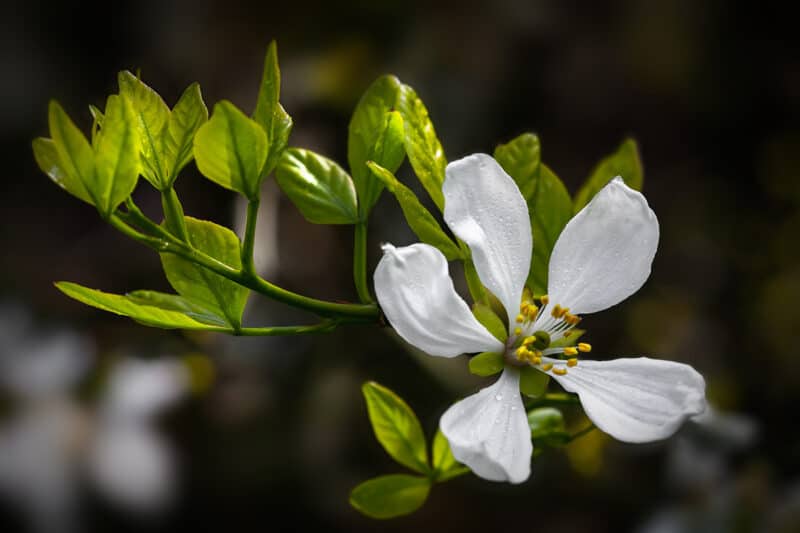
Fertilizer
In the first year, feed with liquid fertilizer aimed at fruit trees every 6 weeks in the growing season.
In the second year, fertilize every 8 weeks with dry fertilizer. Sprinkle around the tree up to the drip line.
For older trees, fertilize 3 times a year (February, April and September).
Water
Hardy orange is reasonably drought resistant, but it’s better to keep it well watered. Don’t over-water, or let the roots sit in pooled water.
Allow the top two inches of soil to dry out, before applying a deep watering.
Pruning
I like to keep my hardy orange shrub height, so I prune it every winter once I have harvested the fruit.
Prune to your desired shape, but be wary of the thorns.
If you have plenty of space, you can let hardy orange grow, but they do get scraggly and out of shape fast.
Root Pruning Container Plants
Root pruning is difficult with all the thorns, but it needs to be done when the tree reaches the size you want to maintain.
Lift the tree out of its pot and cut off 2 to three inches of the outer roots. Give the root ball a gentle shake to remove excess, compacted dirt.
Thoroughly clean the pot before replanting the tree in a good quality potting mix. Watch the thorns.
Companion Planting for Hardy Orange
Hardy oranges don’t like having their soil disturbed around them too much, so choose companion plants that are ground-covering, permanent, and with shallow roots, such as:
- Oregano
- Sorrell
- Thyme
- Strawberries
Common Pests and Diseases for Growing Hardy Orange
Yes it’s hardy, but this plant does face a few challenges.
Citrus Scab
If you have this disease in your garden, scab-like warts appear on the fruit, leaves, and twigs. This is a water-and-wind spread fungus.
Given that hardy orange is predominantly used for marmalade, you don’t want warty skin in it.
You need to treat citrus scab before it fully develops. Spray with a fungicide before blooming if you see little pustules on the undersides of leaves and twigs.
Spray again at petal fall and two to three weeks after that.
Citrus Collar Rot
This fungal disease affects the trunk right above the soil line. Part of the trunk rots and falls away. You may see gum oozing from the wound.
The leaves start to turn yellow and the growth is stunted. Eventually, the plant will die if left unchecked.
Ensure water drains away and the tree isn’t sitting in water. Spray with an anti-rot spray twice a year.
Make sure there is sufficient airflow between plants. If you’ve mulched around the plant, make sure it’s not pushed up against the bark of the trunk.
Harvesting Hardy Orange
In spring, the fruit will be green and unripe. As summer approaches and longer days arrive, the fruit turns yellow. It’s ready when there is a little give when you squeeze it.
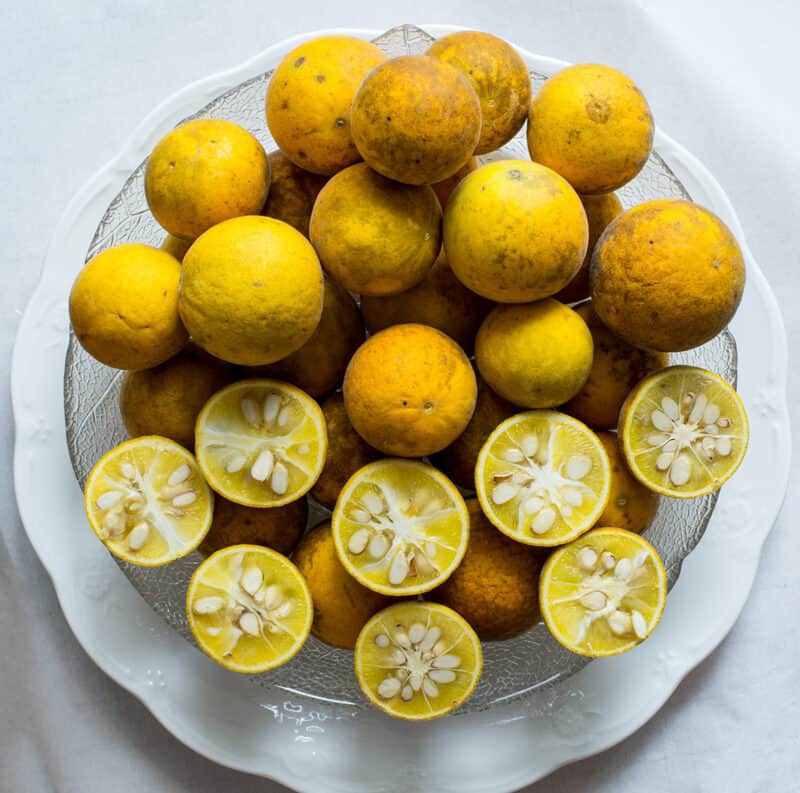
The incredibly sour fruit really is underrated though. It makes a wonderful marmalade. The peel can also be candied. Try using a slice of the fruit as an addition to cocktails.
You can also eat the leaves, which taste nice boiled.
Just keep in mind that the high acidity can give you stomach issues like nausea and pain.
The plant is also known to irritate the skin of sensitive individuals after prolonged contact.
The medicinal uses are many. Throughout history, it has been used for everything from typhoid to toothaches.
Keep in mind that it takes trees up to 12 years to start producing.
